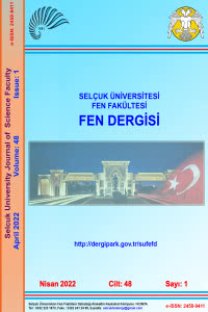Yol Eşlemesi İçin Kıvrımlılık Aralıklarının Belirlenmesinde Varyansın Kullanımı
USAGE OF VARIANCE IN DETERMINATION OF SINUOSITY INTERVALS FOR ROAD MATCHING
___
- Hacar, M., Gökgöz, T., 2016, “An Experiment on Distance Metrics used for Road Matching in Data Integration”, Sigma Journal of Engineering and Natural Sciences, Vol. 34(4), pp. 527-542.
- Haynes, R., Jones, A., Kennedy, V., Harvey, I., Jewell, T., 2007, “District Variations in Road Curvature in England and Wales and Their Association with Road-Traffic Crashes” Environment and Planning A, Vol. 39(5), pp. 1222-1237.
- Li, L., Goodchild, M.F., 2011, “An Optimisation Model for Linear Feature Matching in Geographical Data Conflation”, International Journal of Image and Data Fusion, Vol. 2(4), pp. 309-328.
- Lynch, M. P., Saalfeld, A. J., 1985, “Conflation: Automated Map Compilation—A Video Game Approach”, In Proceedings Auto-Carto, Vol. 7, pp. 343-352.
- Mueller, J. E., 1968, “An Introduction to the Hydraulic and Topographic Sinuosity Indexes” 1. Annals of the Association of American Geographers, Vol. 58(2), pp. 371-385.
- Mustière, S., Devogele, T., 2008, “Matching Networks With Different Levels of Detail”, GeoInformatica, Vol. 12(4), pp. 435-453.
- Olteanu-Raimond, A. M., Mustiere, S., Ruas, A., 2015, “Knowledge Formalization for Vector Data Matching Using Belief Theory”, Journal of Spatial Information Science, Vol. 2015(10), pp. 21-46.
- Transport Infrastructure, 2016, National Road Network Sinuosity Index: Ireland, https://data.gov.ie/dataset/national-road-network-sinuosity-index (Accessed on 1 September 2018).
- Zhang, M., Meng, L., 2007, “An Iterative Road-Matching Approach for the Integration of Postal Data”, Computers”, Environment and Urban Systems, Vol. 31(5), pp. 597-615
- ISSN: 2147-9364
- Yayın Aralığı: Yılda 2 Sayı
- Başlangıç: 2013
- Yayıncı: Selçuk Üniversitesi Mühendislik Fakültesi
Mehri RAHIMI, Farhad HOSSEINALI
DEVELOPMENT OF 3D WEB GIS APPLICATION WITH OPEN SOURCE LIBRARY
MUHAMMED OĞUZHAN METE, DOĞUŞ GÜLER, Tahsin YOMRALIOĞLU
Yol Eşlemesi İçin Kıvrımlılık Aralıklarının Belirlenmesinde Varyansın Kullanımı
SPECIAL MAP BASE OF MILITARY GEOINFORMATION SYSTEM
Ilgar MUSAYEV, Magsad GOJAMANOV
Kişisel Verilerin Korunması: Coğrafi Bilgi Sistemleri Örneği
Açık Kaynak Kodlu Kütüphane İle 3B Web CBS Uygulaması Geliştirilmesi
Muhammed Oğuzhan METE, Doğuş GÜLER, Tahsin YOMRALIOĞLU
INDOOR SURVEYING WITH TERRESTRIAL PHOTOGRAMMETRY: A CASE STUDY FOR SIRCALI MASJID
Lütfiye KARASAKA, HAKAN KARABÖRK, HASAN BİLGEHAN MAKİNECİ, Atiye ONURLU, Gizem İŞLER
Büyük Kafkas Dağlarının Toprak Kayması Yapısının İncelenemsi: Temel Nedenlerin Belirlenmesi
Stara TARIKHAZER, Mirnuh ISMAYILOV, Ilham MARDANOV, Elina KARIMOVA
USAGE OF VARIANCE IN DETERMINATION OF SINUOSITY INTERVALS FOR ROAD MATCHING
